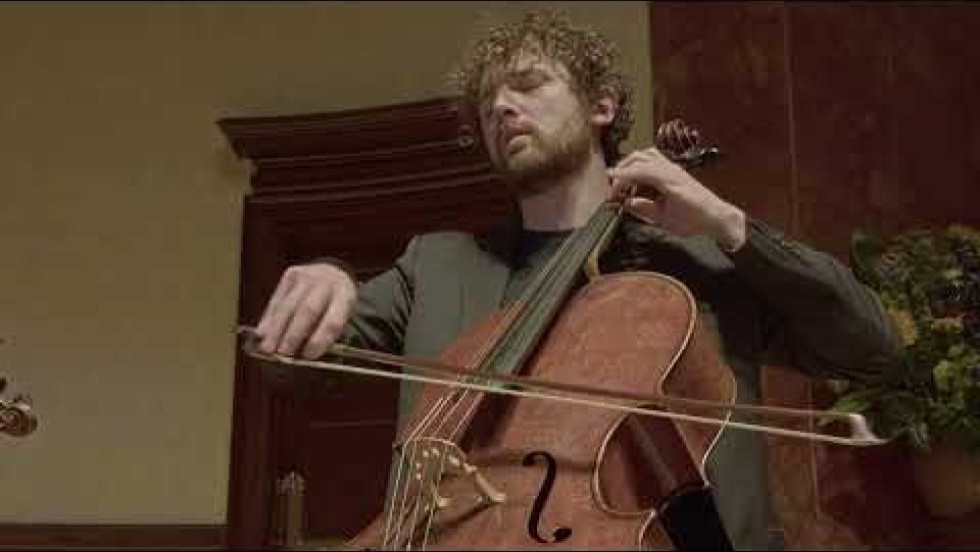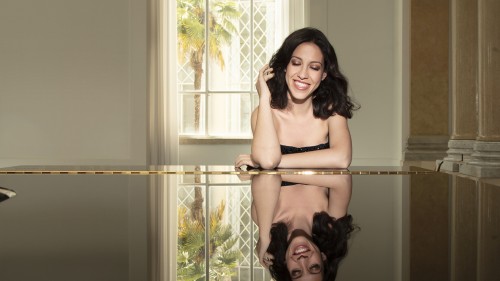
Castalian String Quartet
Debut Series
Cookie Notice
This site uses cookies to measure our traffic and improve your experience. By clicking "OK" you consent to our use of cookies.
Castalian String Quartet
Sini Simonen, violin
Daniel Roberts, violin
Natalie Loughran, viola
Steffan Morris, cello
DEBUT SERIES
The Castalian Quartet, currently a quartet-in-residence at the University of Oxford, is gaining renown for interpretations “full of poetry, joy and sorrow, realized to such perfection” (The Observer).
In their Celebrity Series debut, the Castalian Quartet unveils a diverse repertoire that showcases their versatility and depth. From the nuanced moods, rich allusions, and intricate textures of Schubert to Kurtág’s collection of disparate miniature sound worlds; and from the sprightly and stately dances by Coleridge-Taylor to Beethoven’s Serioso Quartet, full of experimental techniques that set the stage for the composer’s later period, their program is a vivid journey through the landscape of classical music.
Experience the extraordinary talent of this next-generation quartet when they appear on the Debut Series!
Program Details
Franz Schubert’s late work is ambitious. His small-scale works especially, the songs and chamber works, feel expansive beyond their nominal instrumentation. His String Quartet No.13 in A minor, "Rosamunde," does not entirely fit the form of emotional turbulence that his other works of this time are supposed to possess, but it has the same energy of gargantuan ambition. It feels symphonic in scope and can make the listener forget that only four performers are creating this massive sound. It is, taken with his other works of this time, an embodiment of the Romantic ideal of genius—self-consciously iconoclastic and legacy obsessed, a performance of youthfulness.
The first movement shows clear influences of Beethoven’s chamber work, with daringly sudden shifts in mood, phrases that end without resolution, and driving Bach-like counterpoint. It is also like the best of Mozart’s instrumental writing, with a lingering melody that draws the listener through a well-delineated dramatic arc. Its marriage of elegance and daring is typical of Schubert’s late period work and is what makes him such a special composer.
The second movement is what gives the quartet its nickname, as its melody was taken from Schubert’s incidental music for the play Rosamunde. Musicians often praise Schubert for his skill in the nebulously labeled term “voice leading” and this movement is a beautiful example of what this praise might signify. How the melody in the first violin interacts with the bass line in the cello feels especially harmonious and yet, independently, they could each stand alone without needing to reference one another. Schubert understood and put to work this paradox of melodic interdependence better than almost anyone in the history of western classical music. What results is similar to Bach, where each end of phrase is taken up by another voice, signaling a continuation to the next moment, rather than an end to what has already occurred—the movement is one long sentence, with commas to mark the time.
The third movement is somewhat of a gentle practical joke from the composer. Traditionally, this would be a frenetic scherzo, propelling the quartet toward a climactic fourth movement. Not only did Schubert use the mid-tempo dance of a minuet here, but it begins almost formlessly, as if anticipating something Debussy might write a century later. It volleys between moods, first diffuse, then haughty in the Classical manner, then with deep Romantic passion.
The final movement plays with the idea of conventionality, introducing long themes with accompaniment that would not be out of place in Haydn, but which feel strange coming after three movements where expectations were upended so frequently. When a sudden transition occurs, it is a small hiccup before the action resumes as usual. Just as the piece is ending, it feels as though Schubert’s playful rug pulling is over, until suddenly, after a long period of diminishing, the quartet strikes a loud chord to thunderously end the piece.
© Connor Buckley, 2024
Franz Schubert’s late work is ambitious. His small-scale works especially, the songs and chamber works, feel expansive beyond their nominal instrumentation. His String Quartet No.13 in A minor, "Rosamunde," does not entirely fit the form of emotional turbulence that his other works of this time are supposed to possess, but it has the same energy of gargantuan ambition. It feels symphonic in scope and can make the listener forget that only four performers are creating this massive sound. It is, taken with his other works of this time, an embodiment of the Romantic ideal of genius—self-consciously iconoclastic and legacy obsessed, a performance of youthfulness.
The first movement shows clear influences of Beethoven’s chamber work, with daringly sudden shifts in mood, phrases that end without resolution, and driving Bach-like counterpoint. It is also like the best of Mozart’s instrumental writing, with a lingering melody that draws the listener through a well-delineated dramatic arc. Its marriage of elegance and daring is typical of Schubert’s late period work and is what makes him such a special composer.
The second movement is what gives the quartet its nickname, as its melody was taken from Schubert’s incidental music for the play Rosamunde. Musicians often praise Schubert for his skill in the nebulously labeled term “voice leading” and this movement is a beautiful example of what this praise might signify. How the melody in the first violin interacts with the bass line in the cello feels especially harmonious and yet, independently, they could each stand alone without needing to reference one another. Schubert understood and put to work this paradox of melodic interdependence better than almost anyone in the history of western classical music. What results is similar to Bach, where each end of phrase is taken up by another voice, signaling a continuation to the next moment, rather than an end to what has already occurred—the movement is one long sentence, with commas to mark the time.
The third movement is somewhat of a gentle practical joke from the composer. Traditionally, this would be a frenetic scherzo, propelling the quartet toward a climactic fourth movement. Not only did Schubert use the mid-tempo dance of a minuet here, but it begins almost formlessly, as if anticipating something Debussy might write a century later. It volleys between moods, first diffuse, then haughty in the Classical manner, then with deep Romantic passion.
The final movement plays with the idea of conventionality, introducing long themes with accompaniment that would not be out of place in Haydn, but which feel strange coming after three movements where expectations were upended so frequently. When a sudden transition occurs, it is a small hiccup before the action resumes as usual. Just as the piece is ending, it feels as though Schubert’s playful rug pulling is over, until suddenly, after a long period of diminishing, the quartet strikes a loud chord to thunderously end the piece.
© Connor Buckley, 2024
Writing about György Kurtág is quite difficult. This is partly because he is notoriously shy and withholding and partly because his work is so monumental. But primarily it is because his music is so spare and so self-sufficiently beautiful that hardly anything feels appropriate to say in response. There are so few notes and they are teeming with so much meaning that words feel both surplus to requirements and inadequate. His writing is uniquely attentive to what Thomas Adès has referred to as the gravity of each note—the push and pull that a sound has with its neighbors, its individual identity as relational force. Kurtág is a minimalist in the sense that one of his heroes—playwright Samuel Becket—was: each compositional choice is thoroughly considered and feels heavy as a result, requiring the performers to deliberate quite intensely on each physical gesture and every aspect of their sound.
Kurtág’s Six moments musicaux, Op. 44, examines the possibilities of the string quartet as an individual organism through six impressionistic miniatures. The first movement is an invocation, a kind of call for creative inspiration evocative of a fanfare, the quartet cosplaying as a brass ensemble or a cast of bell ringers.
The second movement, “Footfalls,” is a reference to a Samuel Becket play where the sound of a woman’s footsteps is prominently featured. Kurtág pairs this reference with a poem by Endre Ady about someone who hears a woman’s footsteps, hoping she will arrive, only to be left alone as no one comes.
The third movement, “Capriccio,” is a comic turn for Kurtág, full of fits and starts that jar the listener from any sense of expectation they might have.
The fourth movement, “In memoriam Sebök György,” is a tribute to the titular pianist, one of the great talents and teachers in post-war Hungarian music. It is a kind of chorale that dissipates here and there. An expansive, rising motif whisperingly introduced by the cello midway through shares the limelight for the rest of the piece, a heavenly foil to the heavy seriousness of the opening and closing sections.
The title of the fifth movement, “rappel des oiseaux (étude pour les harmoniques),” is primarily a reference to Rameau’s keyboard piece of the same name (“call of the birds”). In modern French, it can also be read as a pun meaning “reminder” or “recall” in addition to the simplest “bird call.” From a composer like Kurtág who loves musical games, it reads as both a description and a command—to the musicians to be as birdlike as possible, and to the audience to remember the joy of listening to birds.
The sixth movement, “Les adieux (in Janáček’s manner),” again presents a double meaning—goodbye to the audience, and farewell to the great composer Leoš Janáček. The piece attempts to capture the sounds and rhythms of human speech, a concept that Janáček spent his career trying to represent musically. The resplendent opening represents something like crowd noise, and the piece develops like casual group conversation, quickening, strengthening, and pulling back in turns before gradually dwindling until the piece ends in silence.
© Connor Buckley, 2024
Writing about György Kurtág is quite difficult. This is partly because he is notoriously shy and withholding and partly because his work is so monumental. But primarily it is because his music is so spare and so self-sufficiently beautiful that hardly anything feels appropriate to say in response. There are so few notes and they are teeming with so much meaning that words feel both surplus to requirements and inadequate. His writing is uniquely attentive to what Thomas Adès has referred to as the gravity of each note—the push and pull that a sound has with its neighbors, its individual identity as relational force. Kurtág is a minimalist in the sense that one of his heroes—playwright Samuel Becket—was: each compositional choice is thoroughly considered and feels heavy as a result, requiring the performers to deliberate quite intensely on each physical gesture and every aspect of their sound.
Kurtág’s Six moments musicaux, Op. 44, examines the possibilities of the string quartet as an individual organism through six impressionistic miniatures. The first movement is an invocation, a kind of call for creative inspiration evocative of a fanfare, the quartet cosplaying as a brass ensemble or a cast of bell ringers.
The second movement, “Footfalls,” is a reference to a Samuel Becket play where the sound of a woman’s footsteps is prominently featured. Kurtág pairs this reference with a poem by Endre Ady about someone who hears a woman’s footsteps, hoping she will arrive, only to be left alone as no one comes.
The third movement, “Capriccio,” is a comic turn for Kurtág, full of fits and starts that jar the listener from any sense of expectation they might have.
The fourth movement, “In memoriam Sebök György,” is a tribute to the titular pianist, one of the great talents and teachers in post-war Hungarian music. It is a kind of chorale that dissipates here and there. An expansive, rising motif whisperingly introduced by the cello midway through shares the limelight for the rest of the piece, a heavenly foil to the heavy seriousness of the opening and closing sections.
The title of the fifth movement, “rappel des oiseaux (étude pour les harmoniques),” is primarily a reference to Rameau’s keyboard piece of the same name (“call of the birds”). In modern French, it can also be read as a pun meaning “reminder” or “recall” in addition to the simplest “bird call.” From a composer like Kurtág who loves musical games, it reads as both a description and a command—to the musicians to be as birdlike as possible, and to the audience to remember the joy of listening to birds.
The sixth movement, “Les adieux (in Janáček’s manner),” again presents a double meaning—goodbye to the audience, and farewell to the great composer Leoš Janáček. The piece attempts to capture the sounds and rhythms of human speech, a concept that Janáček spent his career trying to represent musically. The resplendent opening represents something like crowd noise, and the piece develops like casual group conversation, quickening, strengthening, and pulling back in turns before gradually dwindling until the piece ends in silence.
© Connor Buckley, 2024
The British composer Samuel Coleridge-Taylor was hugely well-regarded and influential during his time. He had a strong international reputation, especially in the United States, and was often referred to as the Black Mahler because of his extravagant talent and Black, biracial identity. His music is both uncompromisingly skillful and strikingly imaginative, a combination that commands the listener to inhabit the work being performed rather than sit back idly.
Fantasiestücke, or fantasy pieces, was a term coined by Robert Schumann to describe a set of small compositions that conveyed specific moods. Their attraction at the turn of the century was that they did not require composers to conform to the early Classical era forms that had come to dominate the compositional landscape of the previous 150 years. Coleridge-Taylor here designs his fantasy works almost in the structure of a Baroque suite, lending his very modern choices an archaic seriousness and authority.
Dvořák, a popular compositional reference for many composers of this era, is a touchstone here, especially in Coleridge-Taylor’s artful combination of folk-like gestures with Classical elegance and Romantic formal seriousness. Coleridge-Taylor’s remarkable sensitivity to texture lends the pieces a clarity that is rare in the dense, contrapuntally driven idiom he chose to compose in.
The first movement, Prelude, begins amorphously, with open intervals in the cello that seem to signal slowness and calm, but their deliberate ambiguity also brings heightened expectation. When the Eastern European-tinged melody comes in, the listener expects a dance. What occurs directly after, though, is a new theme, more conventionally Romantic, again forcing a reorientation and setting the stage for the constant melodic undulation that characterizes the rest of the movement.
The second movement, Serenade, takes its lead from the character of the second theme of the first movement. It is lush, like a persistent, slow exhale, driven primarily by a luxurious melody from the first violin and restlessly and rhapsodically accompanied by the remaining players.
The third movement, Humoresque, is delayed gratification—a dance, hinted at in the Prelude, is now enthusiastically presented in rapid speed. Dvořák’s influence is clear here, the melody and percussive accompaniment reminiscent of Eastern European folk traditions he attempted to capture. The slow interruption in the middle is standard fare in this idiom, where, like in Liszt’s first Mephisto Waltz, the implication is that the village is catching their breath.
The fourth movement, Minuet, is pure Mozartian luxury, with a stateliness and formal coherence that allows for relaxed concentration. It is a reprieve and preparation, allowing the listener to gather themselves for the finale.
The beginning of the fifth movement, Dance, directly recalls the start of the Prelude, but the open intervals in the cello are this time more transparently driving, a clear call to the dance floor. It is again reminiscent of a peasant dance, this time unrelenting, the only reprieve from dancing occurring near the end, when the instruments swirl around each other in a furiously brief fugue. It ends as expected, brashly and with exuberant fanfare.
© Connor Buckley, 2024
The British composer Samuel Coleridge-Taylor was hugely well-regarded and influential during his time. He had a strong international reputation, especially in the United States, and was often referred to as the Black Mahler because of his extravagant talent and Black, biracial identity. His music is both uncompromisingly skillful and strikingly imaginative, a combination that commands the listener to inhabit the work being performed rather than sit back idly.
Fantasiestücke, or fantasy pieces, was a term coined by Robert Schumann to describe a set of small compositions that conveyed specific moods. Their attraction at the turn of the century was that they did not require composers to conform to the early Classical era forms that had come to dominate the compositional landscape of the previous 150 years. Coleridge-Taylor here designs his fantasy works almost in the structure of a Baroque suite, lending his very modern choices an archaic seriousness and authority.
Dvořák, a popular compositional reference for many composers of this era, is a touchstone here, especially in Coleridge-Taylor’s artful combination of folk-like gestures with Classical elegance and Romantic formal seriousness. Coleridge-Taylor’s remarkable sensitivity to texture lends the pieces a clarity that is rare in the dense, contrapuntally driven idiom he chose to compose in.
The first movement, Prelude, begins amorphously, with open intervals in the cello that seem to signal slowness and calm, but their deliberate ambiguity also brings heightened expectation. When the Eastern European-tinged melody comes in, the listener expects a dance. What occurs directly after, though, is a new theme, more conventionally Romantic, again forcing a reorientation and setting the stage for the constant melodic undulation that characterizes the rest of the movement.
The second movement, Serenade, takes its lead from the character of the second theme of the first movement. It is lush, like a persistent, slow exhale, driven primarily by a luxurious melody from the first violin and restlessly and rhapsodically accompanied by the remaining players.
The third movement, Humoresque, is delayed gratification—a dance, hinted at in the Prelude, is now enthusiastically presented in rapid speed. Dvořák’s influence is clear here, the melody and percussive accompaniment reminiscent of Eastern European folk traditions he attempted to capture. The slow interruption in the middle is standard fare in this idiom, where, like in Liszt’s first Mephisto Waltz, the implication is that the village is catching their breath.
The fourth movement, Minuet, is pure Mozartian luxury, with a stateliness and formal coherence that allows for relaxed concentration. It is a reprieve and preparation, allowing the listener to gather themselves for the finale.
The beginning of the fifth movement, Dance, directly recalls the start of the Prelude, but the open intervals in the cello are this time more transparently driving, a clear call to the dance floor. It is again reminiscent of a peasant dance, this time unrelenting, the only reprieve from dancing occurring near the end, when the instruments swirl around each other in a furiously brief fugue. It ends as expected, brashly and with exuberant fanfare.
© Connor Buckley, 2024
Ever since Haydn refined the string quartet as a genre, it has been a vessel for experimentation. Ludwig van Beethoven, in writing his eleventh string quartet, “Serioso,” took full advantage of this tradition. Technically written during his middle period, the quartet features much of what characterizes his late period works: the piece interrogates the listener, placing the burden of intelligibility firmly in their hands. In fact, Beethoven, who experimented with his string quartets more than any other composer of the Classical era, felt audiences wouldn’t be ready to hear this quartet. It was “never to be performed in public,” he wrote in one letter in 1816, a telling observation given that Beethoven composed the quartet in 1810. Its challenge to the listener is clear, especially to those used to standard early 19th-century music.
The first movement, marked by Beethoven’s trademark suddenness throughout, is the thesis statement for the entire piece, marking its ambition to drastically compress what is expected in a string quartet. The remarkably short movement shifts between intense unisons and sweetly lyrical passages without much transition. Though in sonata form, the exposition is not repeated, the development section is so short that every change feels abrupt, and the recapitulation is a frantic restatement that is unceremoniously severed before a coda that leaves the listener with the feeling that more should have been written.
Although the first movement feels like a tangled ball of circuitous themes, it is anchored by a simple four-note motif that most of its material springs from - the D-flat - C - D - E grouping that first appears as four staccato notes concluding the first phrase of the piece. These four notes also inform the material of the more consistently lyrical second movement, providing a sense of long form continuity after a shocking start. In relation to the preceding movement, the Allegretto feels like a resting place, but the densely textured fugue at the center again demands the listener’s attention. Lyricism returns toward the end of the movement, but just as the music feels it has resolved, a dissonant chord unsettles the piece, pushing it toward a moment of transition.
Despite multiple extended lyrical breaks from intensity, the final two movements are as fervent as the first. Each, but especially the final movement, firmly emphasizes that sudden contrast is the primary subject that Beethoven is exploring. As the third movement transitions from its yo-yoing, but comparatively regular, Scherzo-Trio form, a winding, darkly alluring larghetto begins the finale, only to suddenly spiral into an intense triple meter dance, marked Allegretto Agitato. Just as the close of the movement seems clear and predictable, the Agitato slows to a halt and, in the most sudden shift of the piece, transitions to an almost comically playful Allegro in F major. The 30-second coda, in starkly contrasting the rest of the work, shades the entire piece in a veil of irony. The listener must now think back on what they have heard and reconsider the entire quartet from a new perspective.
© Connor Buckley, 2024
Ever since Haydn refined the string quartet as a genre, it has been a vessel for experimentation. Ludwig van Beethoven, in writing his eleventh string quartet, “Serioso,” took full advantage of this tradition. Technically written during his middle period, the quartet features much of what characterizes his late period works: the piece interrogates the listener, placing the burden of intelligibility firmly in their hands. In fact, Beethoven, who experimented with his string quartets more than any other composer of the Classical era, felt audiences wouldn’t be ready to hear this quartet. It was “never to be performed in public,” he wrote in one letter in 1816, a telling observation given that Beethoven composed the quartet in 1810. Its challenge to the listener is clear, especially to those used to standard early 19th-century music.
The first movement, marked by Beethoven’s trademark suddenness throughout, is the thesis statement for the entire piece, marking its ambition to drastically compress what is expected in a string quartet. The remarkably short movement shifts between intense unisons and sweetly lyrical passages without much transition. Though in sonata form, the exposition is not repeated, the development section is so short that every change feels abrupt, and the recapitulation is a frantic restatement that is unceremoniously severed before a coda that leaves the listener with the feeling that more should have been written.
Although the first movement feels like a tangled ball of circuitous themes, it is anchored by a simple four-note motif that most of its material springs from - the D-flat - C - D - E grouping that first appears as four staccato notes concluding the first phrase of the piece. These four notes also inform the material of the more consistently lyrical second movement, providing a sense of long form continuity after a shocking start. In relation to the preceding movement, the Allegretto feels like a resting place, but the densely textured fugue at the center again demands the listener’s attention. Lyricism returns toward the end of the movement, but just as the music feels it has resolved, a dissonant chord unsettles the piece, pushing it toward a moment of transition.
Despite multiple extended lyrical breaks from intensity, the final two movements are as fervent as the first. Each, but especially the final movement, firmly emphasizes that sudden contrast is the primary subject that Beethoven is exploring. As the third movement transitions from its yo-yoing, but comparatively regular, Scherzo-Trio form, a winding, darkly alluring larghetto begins the finale, only to suddenly spiral into an intense triple meter dance, marked Allegretto Agitato. Just as the close of the movement seems clear and predictable, the Agitato slows to a halt and, in the most sudden shift of the piece, transitions to an almost comically playful Allegro in F major. The 30-second coda, in starkly contrasting the rest of the work, shades the entire piece in a veil of irony. The listener must now think back on what they have heard and reconsider the entire quartet from a new perspective.
© Connor Buckley, 2024
“The Castalian Quartet makes the simplest things we hear into the most important things we could ever want to hear.... There were times that I simply could not believe my ears.”
Calgary Herald
Featured Artists
Videos
Pickman Hall Information
This performance is made possible in part by support from Celebrity Series' LIVE PERFORMANCE! Arts for All Innovation Funds.
Related Events

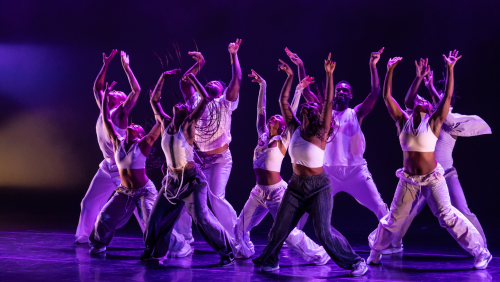
Camille A. Brown & Dancers: Every Body Move
A social community dance class

Book Club: Camille A. Brown & Dancers
Katherine Dunham: Dance and the African Diaspora by Joanna Dee Das
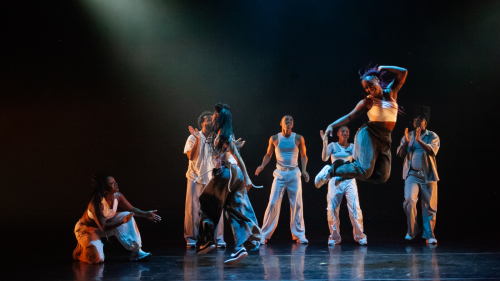
Camille A. Brown & Dancers
I AM

Camille A. Brown & Dancers
I AM
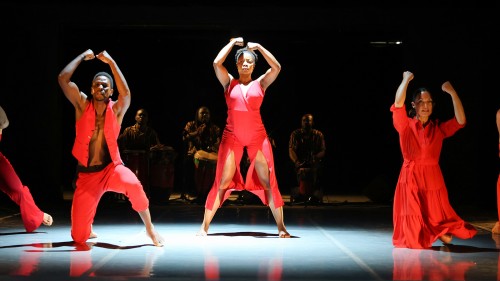
Jean Appolon Expressions
Ansanm Ansanm, Together Together
Stay in touch with Celebrity Series of Boston and get the latest.
Email Updates Sign up for Email Updates
